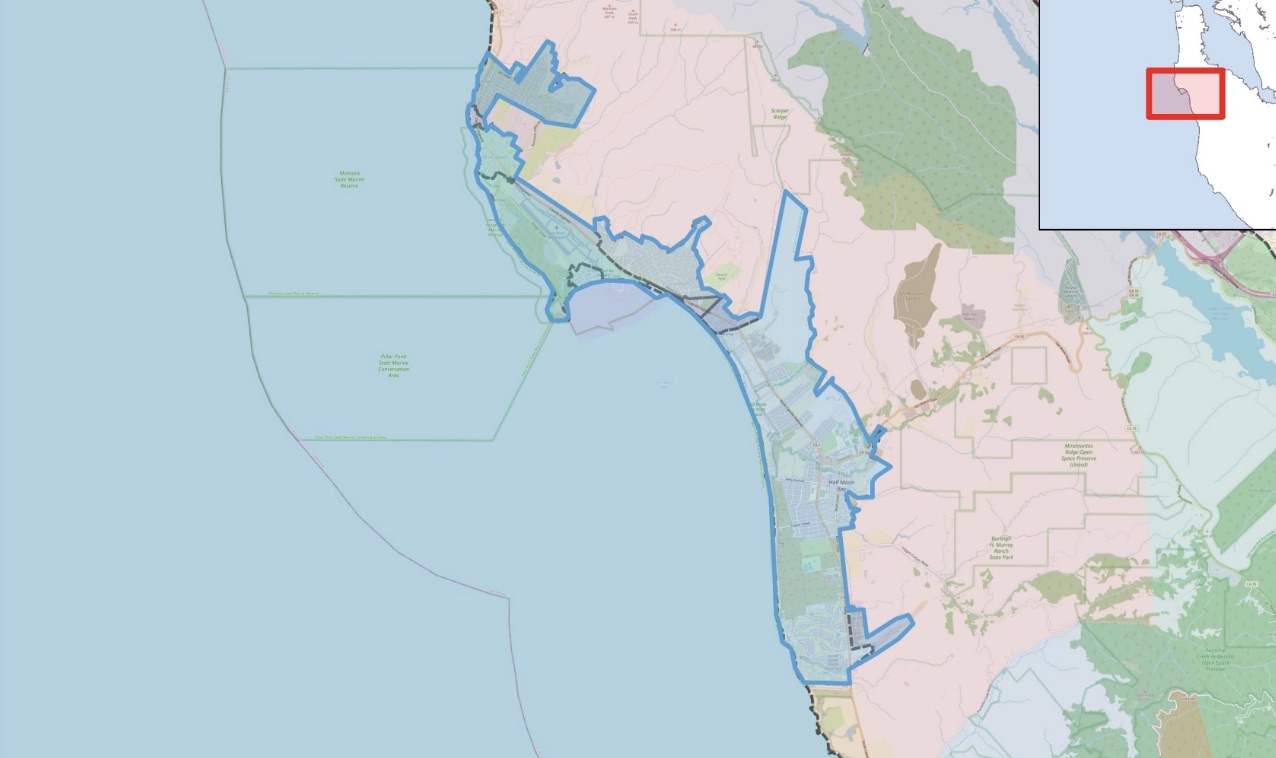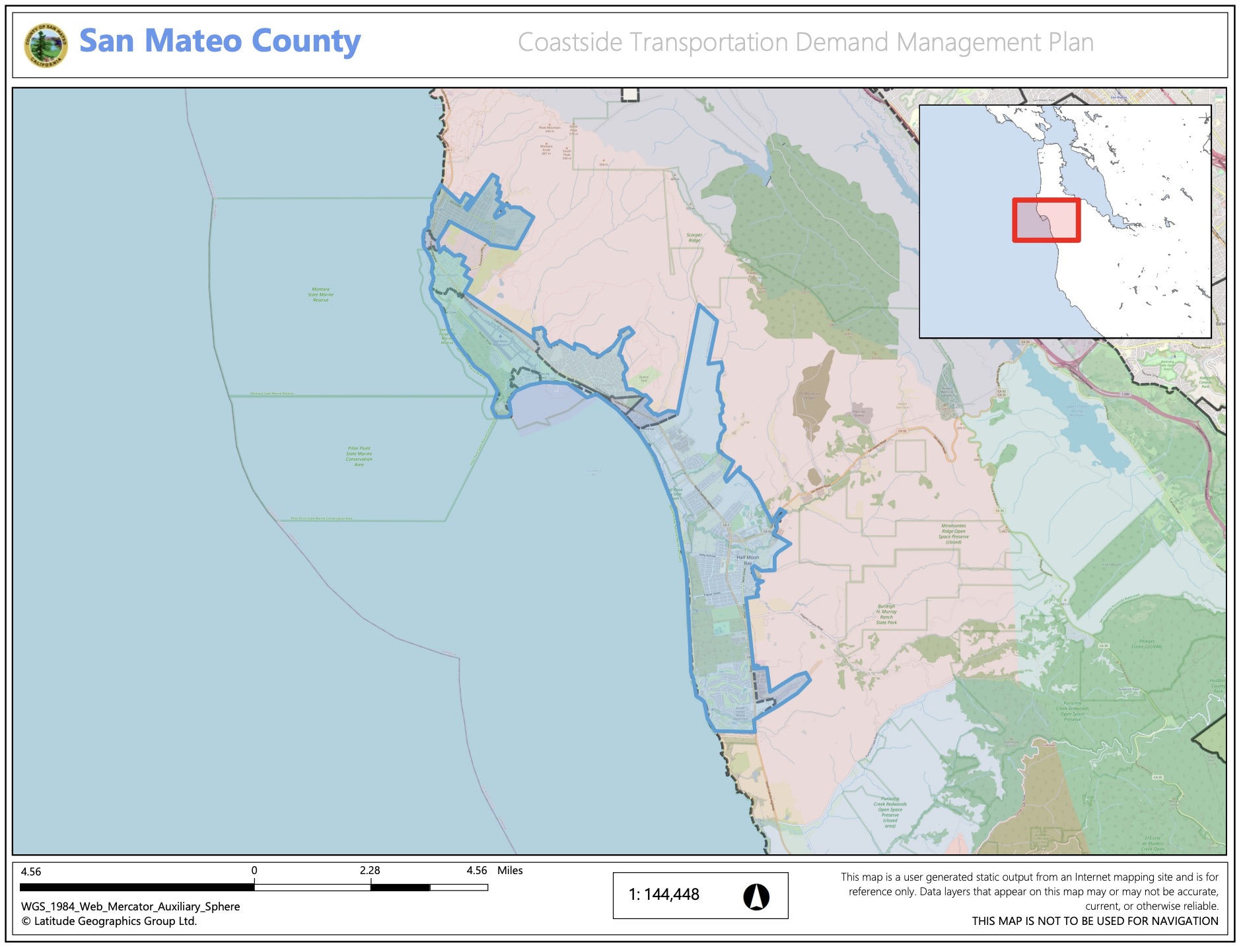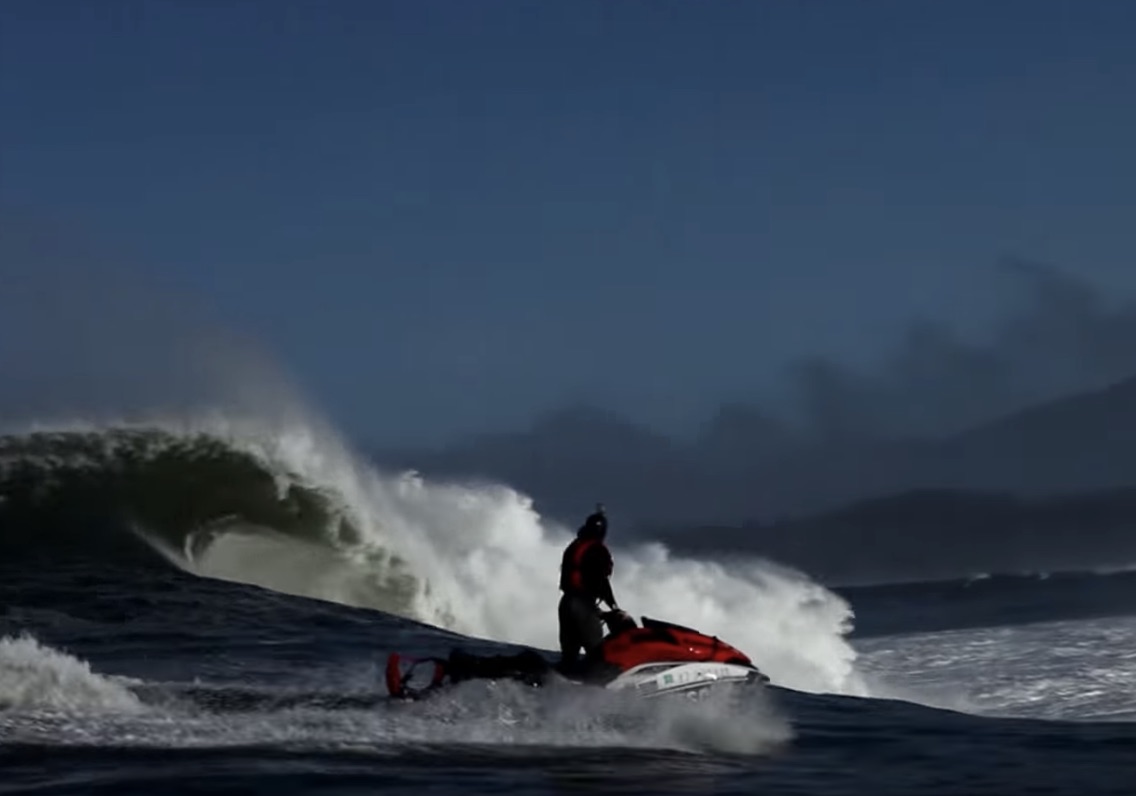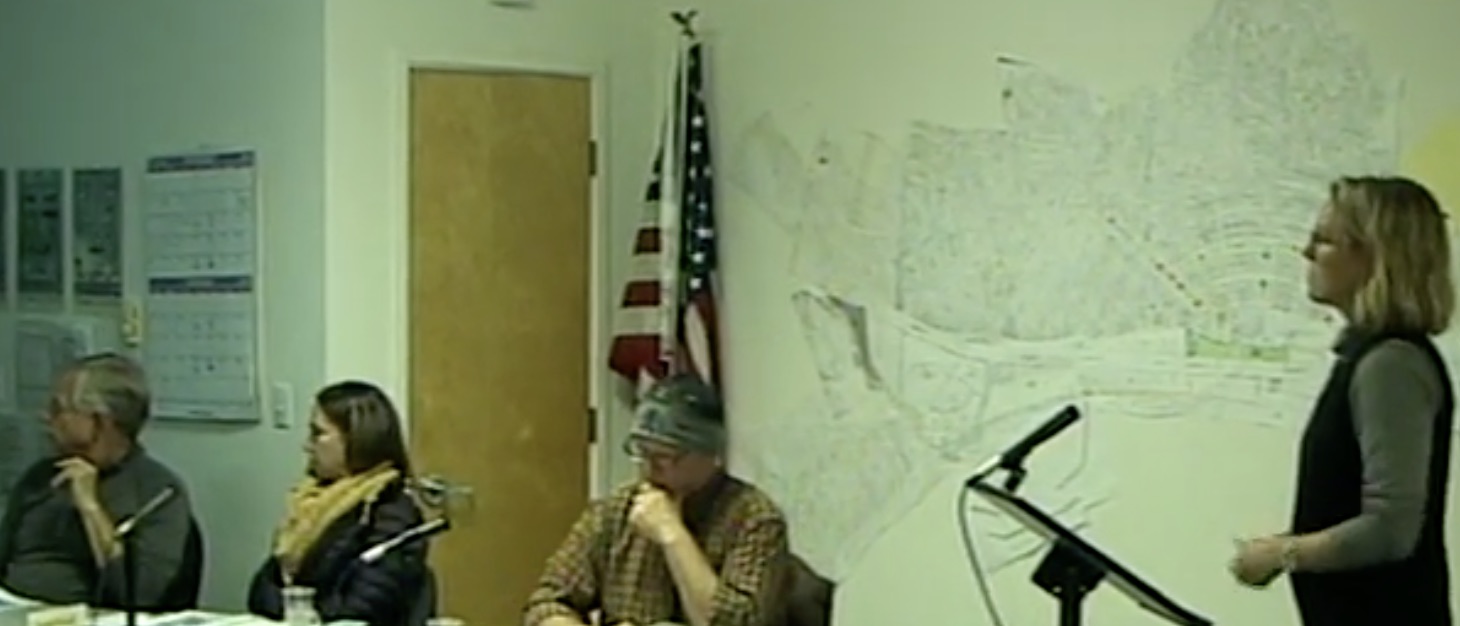|
Getting your Trinity Audio player ready...
|
AGENDA REPORT. From the San Mateo County Supervisor’s meeting on Tuesday, June 14th, 2022 at 9:00am. In Person and Zoom Hybrid.
Adopt a resolution supporting the Midcoastside Transportation Demand Management Plan and submitting an application to the San Mateo County Transportation Authority for Measure A Alternative Congestion Relief and Measure W Transportation Demand Management Program funding.
To: Honorable Board of Supervisors
From: Steve Monowitz, Community Development Director
Subject: 2022 Alternative Congestion Relief and Transportation Demand Management Program grant application for the Midcoastside Transportation Demand Management Plan.
RECOMMENDATION:
Adopt a resolution supporting the Midcoastside Transportation Demand Management Plan and submitting an application to the San Mateo County Transportation Authority for Measure A Alternative Congestion Relief and Measure W Transportation Demand Management Program funding.
PROPOSAL:
The Planning and Building Department proposes to apply to the Transportation Authority’s Alternative Congestion Relief and Transportation Demand Management Program call for projects to develop a Midcoastside Transportation Demand Management Plan and request $100,000 in grant funds. The Plan would support implementation of strategies to reduce greenhouse gases in adopted and draft plans. A resolution of support adopted by the Board of Supervisors is required as part of the grant application.
BACKGROUND:
This section defines Transportation Demand Management (TDM), describes the County’s existing policies and plans that support the implementation of TDM, and identifies funding opportunities to implement TDM.
Definitions:
TDM encourages the use of sustainable transportation options and enhanced mobility, working toward ensuring that all modes of transportation are safe, reliable, and convenient while discouraging driving, managing congestion, and reducing Vehicle Miles Traveled (VMT). Vehicle Miles Traveled is the product of the number of trips a project is expected to generate and the average length of those trips.
Related Plans and Policies:
In 2013, the County’s Energy Efficiency Climate Action Plan (EECAP) found that the transportation sector accounts for over 60 percent of all emissions in the county. The EECAP established a greenhouse gas emissions (GHG) reduction goal that was consistent with the Global Warming Solutions Act of 2006 (AB 32), to achieve a 15 percent reduction below baseline 2005-2008 emissions levels. The EECAP identifies TDM strategies to meet the GHG reduction goal. The County Office of Sustainability, in partnership with other County departments, has prepared a Draft General Plan Climate Element and Draft 2022 Community Climate Action Plan (CCAP) as an update to the 2013 EECAP. The CCAP will be brought to the Board for consideration in Summer 2022. To keep pace with State law and policy and evolving climate science, the updated (and renamed) CCAP establishes a GHG emission reduction target of 45 percent below 1990 levels by 2030 and carbon neutrality by 2045. The 2022 CCAP identifies TDM as a GHG reduction strategy to meet the reduction goal.
In 2022, the City/County Association of Governments of San Mateo County (C/CAG), the agency responsible for overseeing the San Mateo County Congestion Management Program, updated its TDM Policy. The C/CAG TDM Policy now requires new developments that generate more than 100 trips per day to implement sufficient TDM measures to obtain a 25 to 35 percent reduction in trips.
In 1980, the Board of Supervisors and the California Coastal Commission approved San Mateo County’s Local Coastal Program (LCP). In April 1981, the County assumed responsibility for implementing the State Coastal Act in the unincorporated area of San Mateo County’s coastal zone, including issuance of coastal development permits. Local Coastal Program Policy 2.52 Traffic Mitigation for all Development in the Urban Midcoast requires certain applicants for new development that generate any net increase in vehicle trips on Highways 1 and/or 92 to prepare a traffic impact analysis and mitigation plan, with mitigation measures including but not limited to TDM measures identified by C/CAG’s TDM Policy.
TDM Funding Opportunities:
In 1988, San Mateo County voters passed the original Measure A sales tax. In 2004, the voters of San Mateo County reauthorized Measure A and approved an extension of the existing half-cent transportation sales tax for 25 years, from 2009 through 2033. The San Mateo County Transportation Authority (TA) manages the revenue from Measure A and has adopted the Measure A Expenditure Plan to guide expenditures of the revenue generated. Contained within the Measure A Expenditure Plan is a program category that allocates one percent of the revenue to Alternative Congestion Relief (ACR), which is aimed at commute alternatives and planning work to support Intelligent Transportation Systems.
In 2018, the voters of San Mateo County approved Measure W, a new 30-year half-cent sales tax for transportation programs and projects that expires in 2049. The TA adopted the Measure W Congestion Relief Plan, which includes the Countywide Highway Congestion Improvements program category. Through the 2020-2024 San Mateo County Transportation Authority Strategic Plan, the TA developed a competitive TDM subcategory of the Countywide Highway Congestion Improvements category to encourage programs and projects that use TDM measures to reduce highway congestion.
In 2022, the TA Board of Directors adopted the first Alternative Congestion Relief and Transportation Demand Management (ACR/TDM) Plan to support future investment decisions for the Measure A ACR and Measure W TDM categories. The ACR/TDM Plan is the policy foundation for the TA’s investment decisions in these areas.
On April 7, 2022, the TA issued a Call for Projects for the Measure A ACR and Measure W TDM program funds. The ACR/TDM Call for Projects is based on the guidance adopted in the ACR/TDM Plan. The TA may make up to $6 million of Measure A and Measure W funds available for projects that best meet the program evaluation criteria for fiscal year (FY) 2023-24.
DISCUSSION:
Unincorporated communities in San Mateo County generate higher VMT compared to incorporated cities in San Mateo County, and among unincorporated areas, coastside unincorporated communities generate higher VMT compared to bayside unincorporated communities (SB 743 Implementation Decisions Whitepaper, prepared for C/CAG and its Member Agencies, 2021 by Fehr and Peers). According to Commute.org’s Coastside Commuter Transportation Survey, the average one-way trip distance in miles for residents that live and work on the coastside is 9 miles and for residents that live on the coastside and work elsewhere is 23 miles. Implementation of TDM strategies is critical to meet County, regional, and State climate change and GHG reduction goals; however, TDM is complex to implement on the coastside. Transportation options to and from the coastside are limited, with Highways 1 and 92 serving as the primary routes with no functional alternative routes, which must serve drivers, transit users, bicyclists, and pedestrians. The coastside has a lower density land use pattern and high rates of tourism, which means that tailored programs for specific user groups and many partnerships are required for successful implementation of TDM measures.
The County has prepared a draft San Mateo County Midcoast Comprehensive Transportation Management Plan (CTMP or “Connect the Coastside”) as the comprehensive transportation management plan for the San Mateo County Midcoast. At its April 27, 2022 meeting, the San Mateo County Planning Commission unanimously approved a recommendation that the Board of Supervisors adopt a resolution to adopt Connect the Coastside. The CTMP will be before the Board for consideration in Summer 2022. The CTMP identifies the need to further evaluate potential TDM strategies and policies, and the importance of partnering with the City of Half Moon Bay. Unincorporated residents traveling to Highway 92 must go through Half Moon Bay, and these travelers contribute to increased congestion in Half Moon Bay.
Staff has prepared a grant application for the TA Highway Program Call for Projects, to prepare the Midcoastside Transportation Demand Management Plan (Midcoastside TDM Plan). The Midcoastside TDM Plan’s project area includes unincorporated communities in San Mateo County’s midcoast (communities of Moss Beach, Montara, Princeton, El Granada, and Miramar) and the City of Half Moon Bay. The City of Half Moon Bay has prepared a separate grant application for consideration and will partner with the County to prepare the Midcoastside TDM Plan if both the County and City are awarded funds. The County’s proposed budget of $110,000 would fund a consultant team to conduct data collection and analysis, engage stakeholders, recommend TDM policies and programs, and prepare cost estimates that are specific to the coastside. If the City of Half Moon Bay is awarded its request of $110,000 from the TA, the City would work with the County to augment the County’s consultant scope of work to conduct similar activities within the City’s limits. The resulting Midcoastside TDM Plan will provide an actionable path forward for the County, City, and partners to implement effective TDM strategies.
The TA requires a minimum 10 percent cash match ($10,000) from the County for the requested $100,000 grant. The Planning and Building Department will provide funding for this match from departmental reserves. If awarded, the grant would facilitate implementation of the C/CAG TDM Policy, the Local Coastal Program, 2013 EECAP, and draft CCAP.
The TA requires a resolution of local support for the proposed project in order to be eligible for the TA’s ACR/TDM Program. Failure to adopt the resolution will make the County ineligible for the funds, if awarded by the TA.
The resolution has been reviewed and approved by the County Attorney’s Office as to form.
FISCAL IMPACT:
The County will need to provide $10,000 in required matching funds if the County is awarded the requested $100,000 in funding through the 2022 ACR/TDM Program Call for Projects. The Planning and Building Department will provide the required matching funds from Department reserves.
ATTACHMENTS:
A. Project Area Map
More on Connect the Coastside on Coastside Buzz
San Mateo County Planning Passes Connect the Coastside Master Plan WITHOUT Evacuation or Safety Element ~ Promise in Next Few Years
Connect the Coastside Final Draft Ready for Consideration by San Mateo County Planning Commission
MCC’s Dan Haggerty Asks, Again, Why Connect the Coastside Has Not Included Underpasses as a Possibility in CTC Final Draft
“Connect the Coastside” ~ San Mateo County Midcoast Comprehensive Transportation Management Plan Final Draft
Why Does Connect the Coastside’s 30-Year Plan Not Include Dedicated General Fund Funding?
Final Administrative Draft of Connect the Coastside Released By San Mateo County
Have a Comment? Connect the Coastside Walking and Biking Draft Plan Goes Facebook Live
Midcoast Connect the Coastside Walking and Biking Draft Plan Comment Period Ends Nov. 9th, 2020
Midcoast Community Council and Connect the Coastside Transportation Study Session
Connect the Coastside Moves Forward With Roundabouts, But Will There Be Money?






